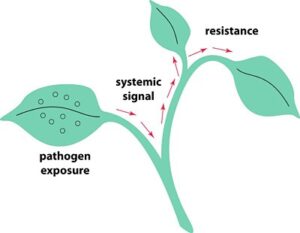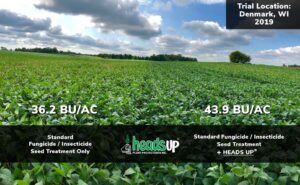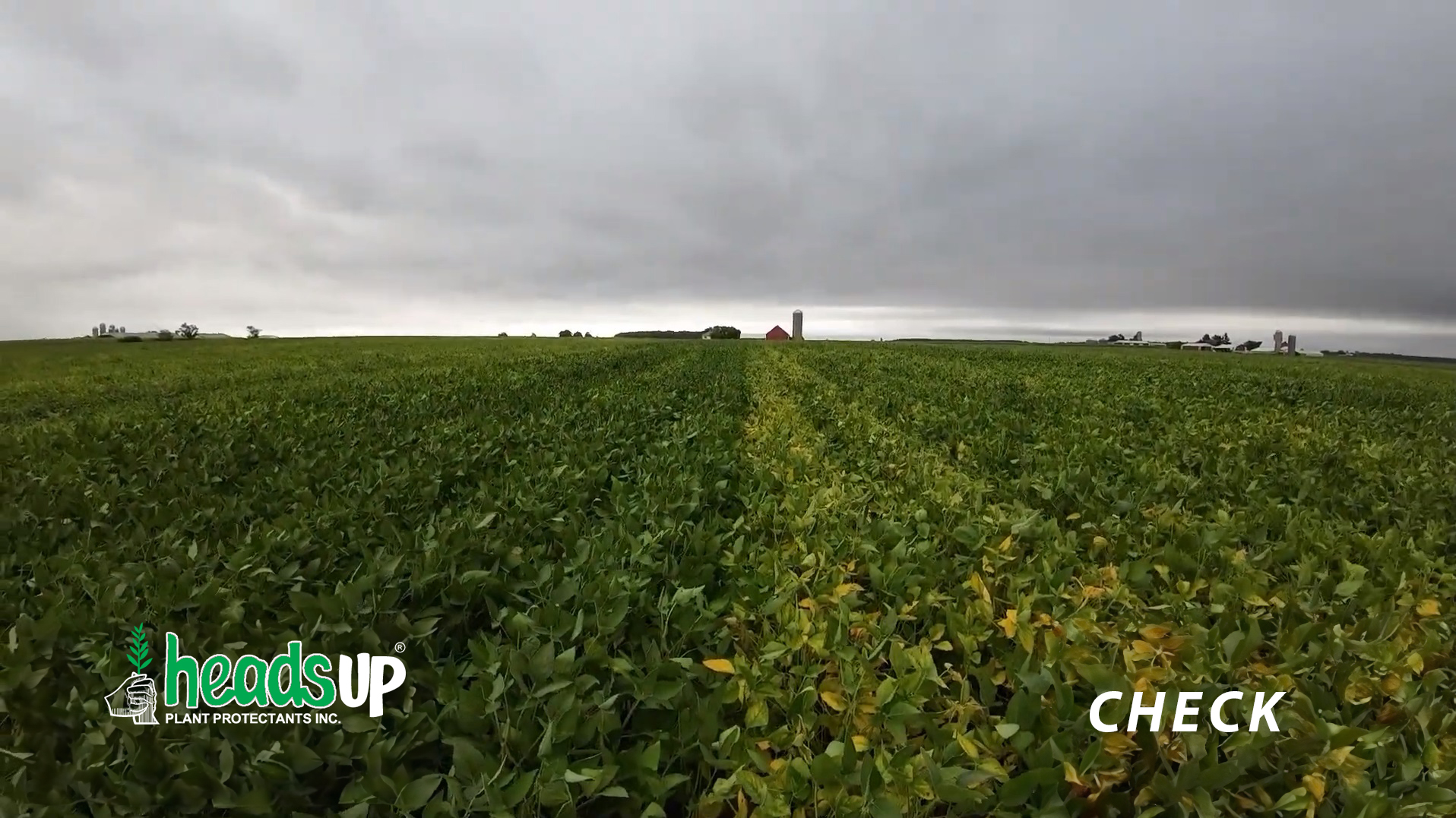Systemic Acquired Resistance – A Novel Mode of Action to Unlock Your Seeds Full Genetic Potential
Fungicides by definition are chemical agents that kill a fungus or inhibit the growth of a fungus. Fungicide seed treatments are disease pathogen inhibitors that are commonly used to protect your seed from seed and soil borne fungal diseases.
When it comes to your soils, there are numerous fungal pathogens that overwinter and pose a threat to the germination, vigor, and overall health of your crop. Fungal diseases can be a major yield limiting factor for farmers in both wet, cool, and warm years. Stunting, poor emergence and early signs of stress in your plants can be often attributed to diseases like root rot and the damping off complex which can be linked to fungal pathogens like Rhizoctonia, Fusarium, and Pythium. Similarly, diseases like Sclerotinia stem rot (white mold) can be traced to the inoculum known as sclerotia (the fungal resting structure of sclerotinia sclerotiorum) that overwinters and will germinate to produce spores, known as ascospores, that can infect your plant at early flowering (reproductive stages).
To combat fungal seed and soil borne pathogens, agronomists have turned to conventional fungicide seed treatments. These treatments, while effective, provide protection often only for the first 10-14 days after planting and only target one or few specific disease pathogens^1.
Today, new research and a handful of products have been developed that show there is another mode of action farmers can utilize which provides a broad spectrum, full season effect called Systemic Acquired Resistance (S.A.R).
First coined in the 1960’s, Systemic Acquired Resistance, or S.A.R, was discovered by A. Frank Ross, Plant Pathologist at Cornell University, who observed S.A.R. working in Tobacco plants which he exposed to a virus called Tobacco Mosaic Virus (TMV) intentionally to study the virus’s effects. In Ross’s studies he showed, “Inoculation of half-leaves of Tobacco plants (Nicotiana tabacum var. Samsun NN), with tobacco mosaic (TMV) virus induced a high level of resistance to TMV in the opposite half-leaves.”^2
Subsequently, Ross noted challenging the resistant leaves at later dates with TMV showed a reduction in the size of the lesions caused by the TMV and a reduction in the number of lesions. Ross also noted natural disease resistance where “inoculation of the lower leaves of the plant induced disease resistance in the upper leaves and vice versa.”
Interestingly, Ross found that the disease resistance induced by TMV was not limited to only that particular strain of virus, but noted that “leaves with TMV induced resistance also showed resistance to turnip mosaic virus and tobacco ringspot virus”, proving S.A.R. to be broad spectrum.^2

While Ross’s early discoveries were revolutionary at the time, more recently plant pathologists have found that Systemic Acquired Resistance can be triggered by a multitude of bio-active chemical compounds that stimulate innate plant defense pathways.^3 Furthermore, the chemistries, such as in the active ingredients in the product Heads Up® Plant Protectant, can induce disease resistance on fungal and bacterial diseases.
Dr. X.B. Yang, Professor Emeritus and former Plant Pathologist at Iowa State University explains “induction of active (disease) resistant mechanisms can be around the infection point (local) or in distal plant parts of the plant (systemic). The activation of systemic defenses involves the accumulation of anti-microbial compounds or “priming” of tissues at sites distant from the site of infection”. The priming effect of S.A.R. notably can be sustained throughout the entire growing season, whereas the effects of fungicide seed treatment is often short-lived.


Heads Up® Plant Protectant, a biological seed treatment which can be used for the suppression of diseases like sclerotinia white mold (sclerotinia sclerotiorum), SDS (fusarium virguliforme), and rhizoctonia root rot/damping off, is a broad-spectrum seed treatment that utilizes an entirely non-fungicidal approach, rather utilizing plant extracted chemical compounds that induce S.A.R.
Colin Dutcheshen, President of Heads Up® Plant Protectants Inc, explains the products unique mode of action:
“All plants have the genetic ability to defend themselves against fungal and bacterial diseases. When under attack by a disease pathogen, the plant stimulates warning signals which move throughout the plant and elicit defenses. The problem is while these defensive warning signals help to elicit natural defenses of the plant, often times they are onset too late as they only occur after disease is present and yield loss may have already begun. The advantage of Heads Up®, utilizing S.A.R., is that while not active on the disease itself, works to turn on the defensive abilities of the plant upon germination. Inducing disease resistance early, before a pathogen attacks, is key in helping the plant to become “primed” and more readily available to utilize its own genetic ability to fight off disease regardless of when or what pathogen sets in”
On the market today there are a handful of products utilizing systemic acquired resistance, also known as plant activators or signaling compounds, from multinational ag chemical manufacturers.
When it comes to Heads Up® Plant Protectant (seed treatment), Dutcheshen explains,
“It is a product that is unique in that we have seen it be effective at controlling a broad spectrum of diseases like sclerotinia white mold, SDS, rhizoctonia and pythium. The mode of action, S.A.R., truly is a different way of poking at a problem for growers, and we have seen the results in reducing the severity while simultaneously lowering the incidence of infection of various fungal diseases. By doing so, Heads Up® can help farmers who are challenged by yield robbing fungal diseases save yield.”
For best results, Dutcheshen recommends pairing Heads Up® with the best genetics available when making your seed choice. He states,
“If a disease like White Mold is your primary concern, make sure you are asking your seed dealer for the most tolerant variety, or the variety with the highest score against white mold, then ask him to pair Heads Up® with your seed choice.” Adding, “Since Heads Up® is simply working to induce the innate resistance of the variety, genetic selection of your seed is very important. Heads Up® is only as effective as the genetic ability of the variety allows; so Heads Up® + your best variety a one-two punch when it comes to disease.”
As a final recommendation, Dutcheshen suggests stacking Heads Up® with Fungicide seed treatments, as the products offer two very different modes of action which together will give you the best chance of success against soil borne diseases early on and throughout the entire growing season.


Image credit
1. https://www.oregon.gov/oda/shared/documents/publications/pesticidesparc/pesticideapplicatorseedtreatmenttrainingmanual.pdf
2. https://www.sciencedirect.com/science/article/abs/pii/0042682261903191#!
3. https://www.keyplex.com/knowledge-base/broccoli-research/systemic-acquired-resistance-plants-secret-weapon/

